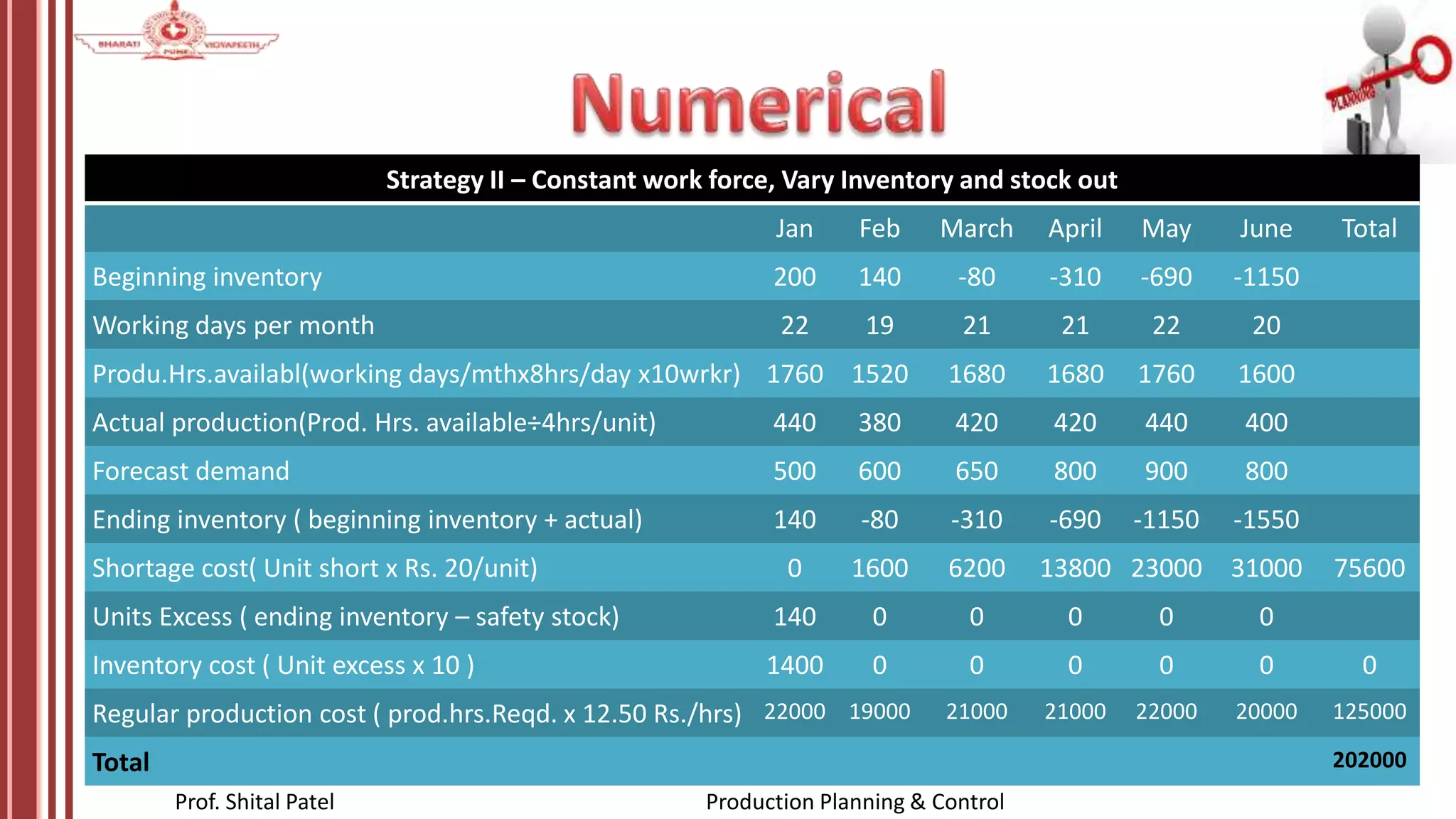The document discusses production planning and control, emphasizing the importance of forecasting, aggregate planning, and capacity planning in achieving optimal resource utilization in manufacturing. It details various forecasting methods, including qualitative and quantitative approaches, and highlights the need for accurate demand predictions to inform investment and production decisions. Additionally, it covers specific forecasting techniques like time series analysis and regression, along with their applications in sales forecasting and trend analysis.
























![Prof. Shital Patel Production Planning & Control
Weights Applied Period
3 Last month
2 Two months ago
1 Three months ago
6 Sum of weights
January 10
February 12
March 13
April 16
May 19
June 23
July 26
Actual 3-Month Weighted
Month Shed Sales Moving Average
[(3 x 16) + (2 x 13) + (12)]/6 = 141/3
[(3 x 19) + (2 x 16) + (13)]/6 = 17
[(3 x 23) + (2 x 19) + (16)]/6 = 201/2
10
12
13
[(3 x 13) + (2 x 12) + (10)]/6 = 121/6](https://image.slidesharecdn.com/2-220405075812/75/2-Forecasting-Aggregate-planning-Capacity-planning-pptx-25-2048.jpg)














































































![Prof. Shital Patel Production Planning & Control
The following data gives the sales of the company for the various
years. Fit the straight line and forecast the sales for the year 2018
and 2019. [Tabulate the calculations] ( Dec.17)
Year 2009 2010 2011 2012 2013 2014 2015 2016 2017
Sales
(‘000)
13 20 20 28 30 32 33 38 43](https://image.slidesharecdn.com/2-220405075812/75/2-Forecasting-Aggregate-planning-Capacity-planning-pptx-104-2048.jpg)

